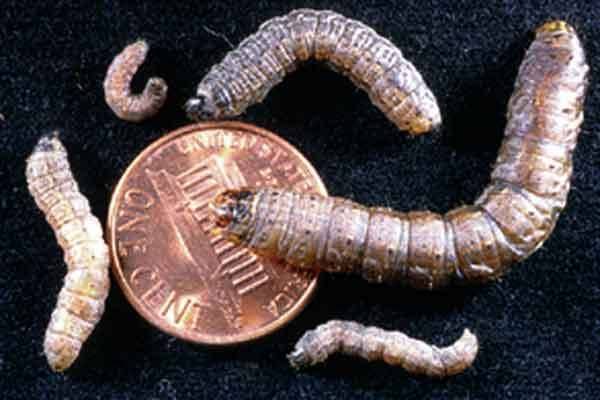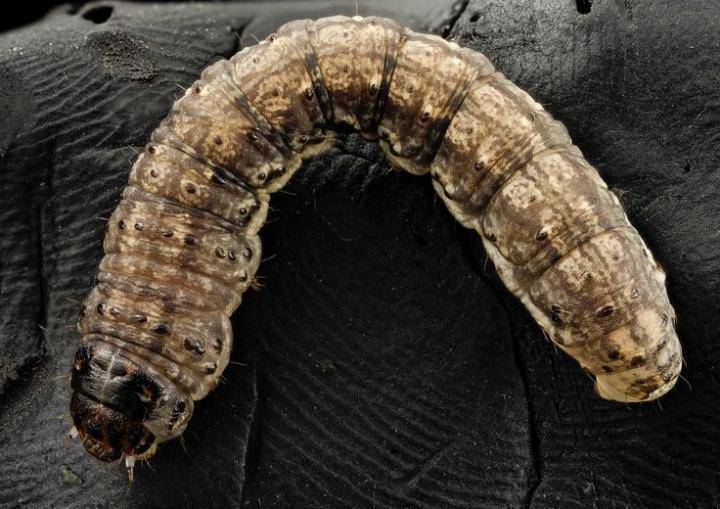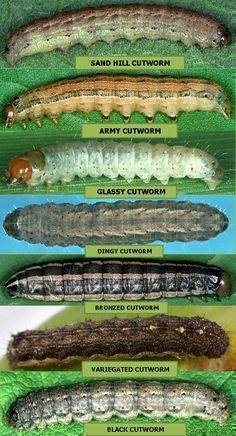Cutworm Management
Cutworms are moth larvae that hide under litter or soil during the day, coming out in the dark to feed on plants. A larva typically attacks the first part of the plant it encounters, namely the stem, often of a seedling, and consequently cuts it down; hence the name cutworm. Cutworms are not worms, biologically speaking, but caterpillars.
The term cutworm applies mainly to larvae of various species in the Noctuidae, a large family of moths; however many noctuid species are not cutworms, and some moths whose larvae have essentially the same habit, which justifies calling them cutworms, are not noctuids. Cutworms are notorious agricultural and garden pests. They are voracious leaf, bud, and stem feeders and can destroy entire plants.

Typical Damage: First signs of damage are holes in leaves or semi-circular notches eaten from the edges of leaves or the base of plants. Usually plants will be clipped off right at the soil surface or may even be eaten off below the surface. Damage will tend to move along the seed row with patches growing over time.
When and How to Monitor: Check fields from May to early-mid July. During the day cutworms will be under the soil surface up to 3 or 4 inches deep, although they tend to stay out of moisture and may be just under the soil surface. Mark off an area of soil 50cm x 50cm and count the larvae within that area; multiply by four to get the number per square meter. Investigate edges of patches where new damage is occurring.
Economic Threshold
Cereals & Canola: 2 to 4 larvae per square meter. For Red-backed Cutworm and Pale Western Cutworm, well established crops with good moisture can tolerate higher numbers of 5 to 6 larvae/m2. General rule of thumb for economic threshold is spray if there is 30% or more plant stand reduction.
Flax: 4 to 5 larvae per square meter.
Here are some control options to manage Cutworms and protect your yield.



